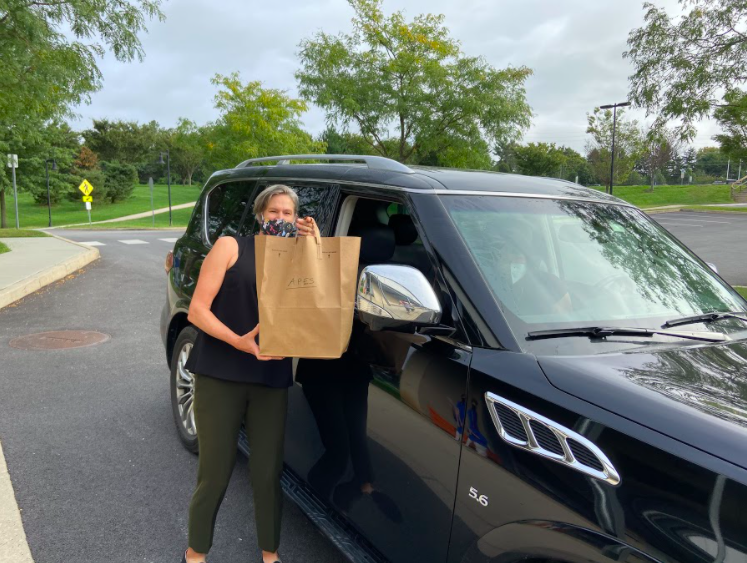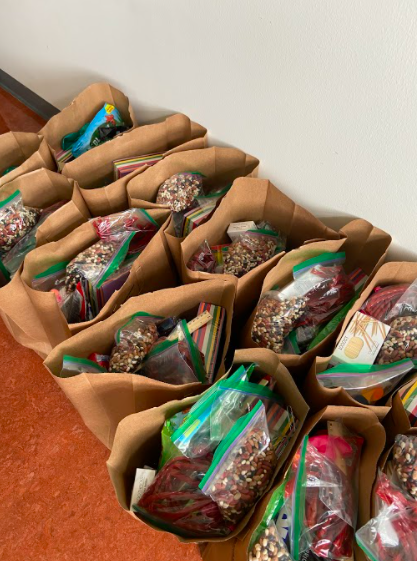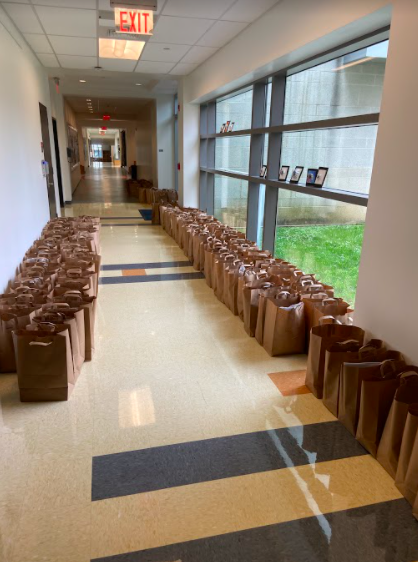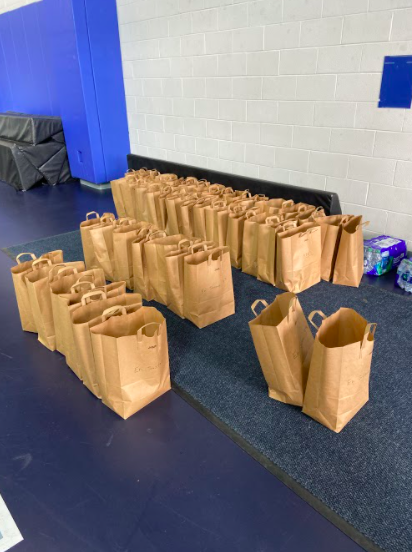Ronak Nagar ‘24
Social distancing required for in-person learning at EA is presenting a variety of challenges to academic departments trying to make instruction as high-quality as it was before the pandemic began in March. Grace Limaye, Science Department Chair, explains one of the initial challenges for the science department: “because science is a very hands-on subject, we [the department] were panicking, as we tried to figure out a way to do labs.”
Labs are a crucial part of learning for science, as they allow students to interact directly with data. Due to the inability to share equipment among students in class and the lack of social distancing typically involved, most labs will aim to be completed at home. To fulfill this critical aspect of EA science classes from home, students received bags containing equipment needed to perform labs from home. As the start of school has approached this fall, the return has also been centered around safety.
Limaye explains the department’s goal to promote remote lab safety: “We will not be sending home any risky materials, but we will be sending safety contracts and safety glasses. However, not all labs can be performed safely and properly from home: some will be done using online simulations such as Phet, Gizmos, and Pivot Interactives. These simulations will provide accurate information and allow students to experience more complex labs.”
Apart from online lab simulations, the Science Department is also looking into the possibility of executing individual labs in-person. Limaye explains a possible scenario: “Each class would be split in half. One half would work on the lab with separation through plexiglass while the other half would do separate activities.” To accommodate both sections of the class, this scenario would make labs a two-day project and therefore would cut into the breadth of topic coverage. Limaye says, “We would just have to be efficient as possible.”

The primary struggle for teachers, however, lies in accommodating those who have chosen to remain virtual while teaching those present in class. Rohith Tsundupalli ‘24, who has been attending school in-person, notes that “sometimes it is a little hard because the students that are online may not be able to see exactly what we see on the board, especially if there are technical issues… but overall, they are doing a really good job.” Nearly all districts offer students a hybrid system that allows students to choose whether or not they will remain virtual. Some students, such as Jack Riley ‘24, feel that “in-person learning is much more effective than virtual learning” and describe their learning experience as more efficient. Many parents are struggling to decide what is best for their children especially in these uncertain times.
Teachers also seem to be divided as well, with some advocating that in-person education is the best and others insisting that, for everyone’s health and safety, online learning for all is the best option. For students who choose to be virtual, Kelly Edwards, Math Department Chair, says that all group projects will be done through Zoom in math classes, even if students are in-person. “Although sometimes we may have a quick discussion while sitting six feet apart, most of the group work will be done through Zoom,” Edwards explains. She goes on to explain that “sometimes we can sit six feet apart and have a conversation but [it] might be difficult.” In order for the online students to see the same material as those in class, all teachers “still use the white boards…but everyone also has an iPad. The teachers are given a stylus so they can write on an iPad, making the work easily annotated by teachers. The work that the teachers write can be shared in Zoom.” Edwards notes that she also “has to remember to look at the computer screen so that the virtual kids can still be in class.”
Another challenge that arises with both online and in-person learning for all departments is grading. After the spring closure, the expectations for the teachers and grading systems were unclear and a bit more lenient, especially with the absence of in-person assessments. Now, though, teachers have spent some time in this online environment and have taken training over the summer that prepares them for the struggles of an online or hybrid learning system. Edwards notes that the teachers now “have to be flexible.” Now, though, they will be grading everything normally with the start of the new school year. However, Edwards explains that teachers are still slightly reluctant to give assessments because they “are still super difficult online. The test is out in the open and it is hard to make kids not use ‘Mathway’ type things.” Gautum Ketkar ‘24 also notes that “the tests are a lot better on paper than Canvas… even though there are restrictions.”
Limaye also agrees with Edwards, saying that they are “trying to still be fair and rethink assessments when necessary.” Nevertheless, teachers are still trying to give students online tests and quizzes because AP exams and other major assessments toward the end of the year may be online. Teachers are still unsure about what may happen in the future, but they are doing their best to prepare their students while implementing safe practices, which is recognized as necessary by the students. Brendan Schlitt ‘21 comments that the new safety changes are “fair and reasonable and EA is doing a great job at keeping everyone safe while…making sure everyone is having a great and fun experience.”


